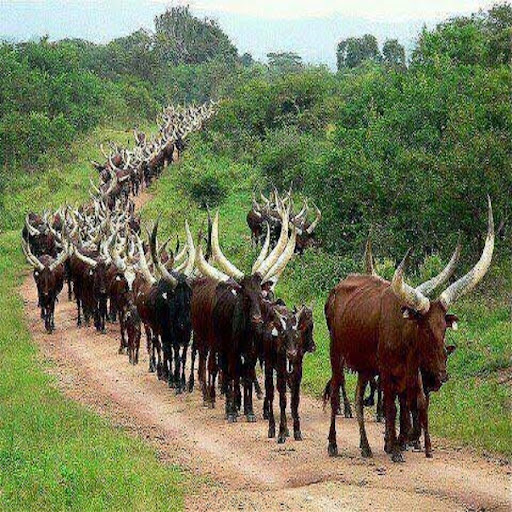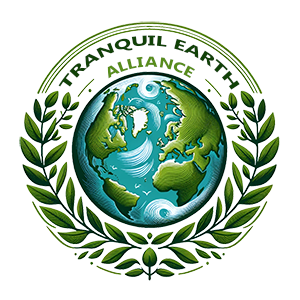Uncovering the Role of Over Grazing in Fueling Environmental Degradation and CO² Emissions
Overgrazing has been identified as a significant contributor to environmental degradation and escalating CO² Emissions. While often overlooked, its impacts on ecosystems and the climate cannot be ignored. This article aims to provide an in-depth analysis of the causes, consequences, and potential solutions to address this pressing issue. Supported by research data and credible sources, we explore the far-reaching implications of overgrazing on the environment and present strategies for sustainable grazing management.


Understanding Overgrazing
Overgrazing is a global issue that occurs when livestock are given access to grazing lands beyond their capacity. From cow stock keeping in Sudan, sheep, and pigs in China to pigs in Denmark. This problem affects more than 70% of the world’s drylands and has severe environmental consequences. One of the major impacts of overgrazing is the loss of biodiversity, as livestock prefer certain plant species, depleting them and reducing overall plant diversity. This can lead to the extinction of species in an area and disrupt the natural balance between grazing and browsing animals, further contributing to the decline of biodiversity.
Soil erosion is another significant issue linked to overgrazing. When livestock consume vegetation, the exposed soil becomes prone to erosion by wind and water. This results in the loss of valuable nutrients and organic matter, reducing soil fertility. In arid and semi-arid regions, this erosion escalates the risk of desertification, where the land becomes barren and arid.
Desertification is a severe consequence of overgrazing, adversely impacting local communities who depend on the land for their livelihoods. It makes it challenging to grow crops or provide sufficient grazing for livestock, affecting food security and economic stability.
To combat overgrazing, sustainable land management practices are crucial. This includes properly managing livestock numbers, implementing rotational grazing systems to allow vegetation to regenerate naturally, and restoring degraded lands through reseeding and reforestation efforts. Promoting sustainable farming practices and raising awareness among livestock owners are essential too.
Addressing overgrazing requires collaboration between governments, conservation organizations, and local communities. It is necessary to implement effective strategies for sustainable land use to protect the environment, preserve biodiversity, and ensure the long-term viability of grazing.
Overgrazing is a global problem impacting drylands worldwide. It leads to significant environmental issues such as loss of biodiversity, soil erosion, and desertification. It is crucial to adopt sustainable land management practices, raise awareness, and foster collaboration among stakeholders to effectively address overgrazing and safeguard grazing lands for future generations.
In Tanzania, for example, the Buligi Chato reserve faced significant challenges. Many herds were brought in by Rwandan herders, putting the reserve at risk of extinction. During President Kikwete’s administration, they were expelled from the reserve, but they repeatedly brought back their herds.
Under the late President John Joseph Pombe Magufuli’s leadership, the reserve was declared a National Park with a strong emphasis on conservation. The situation has improved greatly.
“Zamani kulikuwa na wanyama wangi sana humu, wengine walikuja hadi kijijini. Lakini wanyarwanda waivyokuja ah! wanyama walitoweka kabisa, lakini sasa hivi angalau wameaza kurudi.”Tunamshukuru sana Hayati Magufuli.
That is Swahili, details translated in English as “In the past, there were many wild animals, some would even come to the village. But when the Rwandans came – oh! Many wild animals disappeared completely, but now they have started to come back. We are grateful to the late Magufuli,” said an elderly man named Zakaria, a resident of Nyakakahura, the village near the reserve.
Environmental Degradation
Overgrazing poses severe threats to the environment. For instance, it leads to a loss of plant diversity, disrupts natural habitats, and increases soil erosion. A scientific study by Laca et al. (2016) found that overgrazing can reduce plant biodiversity by altering species composition. The resulting loss of vegetation cover increases soil vulnerability to erosion, exacerbating the degradation of fragile ecosystems such as grasslands and rangelands. Overgrazing, especially in arid and semi-arid regions, amplifies the risk of desertification, a process where productive land turns into desert-like conditions. This process negatively impacts local communities that rely on the land for agriculture and livestock rearing.
The loss of plant diversity caused by overgrazing is a significant concern as it disrupts the delicate balance of ecosystems. Different plant species provide various functions, such as soil stabilization, nutrient cycling, and providing habitat for insects and other animal species. When certain plant species are continuously grazed or completely removed, it disrupts these functions and can lead to ecological imbalances.
Soil erosion is another critical consequence of overgrazing. The removal or degradation of vegetation cover exposes the soil to the erosive forces of wind and water. Without the protective cover of vegetation, the soil becomes more susceptible to erosion, leading to the loss of valuable topsoil and reducing soil fertility. The loss of soil fertility further exacerbates the challenges faced by local communities dependent on agriculture and livestock production.
The study by Laca et al. (2016) highlights the negative effects of overgrazing on plant diversity and soil erosion. The researchers observed that overgrazed areas had lower species richness and altered species composition compared to properly managed grazing areas. This reduction in plant biodiversity not only affects the overall health of the ecosystem but also diminishes the resilience of these areas to environmental stressors such as drought or climate change.
To mitigate the environmental degradation caused by overgrazing, sustainable land management practices are crucial. Implementing rotational grazing systems, where livestock are moved periodically to different grazing areas, allows plants to recover and prevents overgrazing in specific areas. Restoring degraded lands through reseeding, reforestation, and soil conservation measures can also help rehabilitate and protect grazing lands
Overgrazing poses severe threats to the environment by reducing plant diversity, disrupting natural habitats, and increasing soil erosion. The scientific evidence supports these claims and emphasizes the need for sustainable land management practices. Collaborative efforts between governments, local communities, and conservation organizations are necessary to address these issues and ensure the long-term sustainability of grazing lands.
CO² Emissions
The intricate relationship between overgrazing and CO² Emissions hinges on the profound consequences it has on carbon sinks and the disruption of the carbon cycle. These emissions transpire as a direct consequence of the degradation of plants and the subsequent release of soil organic carbon into the Earth’s atmosphere. This intricate interplay between ecological factors and climate change has garnered substantial attention from researchers and environmentalists alike. One such pertinent study, conducted by Schuman et al. in 2017, illuminates the alarming impact of overgrazing on CO² emissions and the fragile balance of our ecosystem.
Schuman et al.’s research findings paint a sobering picture of the repercussions of mismanaged grazing lands. Their comprehensive study demonstrated that overgrazing, a common consequence of unsustainable land management practices, can result in a staggering 27% increase in soil carbon losses when compared to well-managed grazing lands. This startling statistic underscores the pivotal role that responsible land management plays in curbing CO² Emissions.
The core issue at hand lies in the fact that overgrazing leads to the depletion of vegetation cover, leaving the soil exposed and vulnerable. This not only accelerates soil erosion but also disrupts the intricate carbon cycle. As plants degrade and organic matter breaks down, significant amounts of previously sequestered carbon are released into the atmosphere in the form of CO², thereby exacerbating the global climate crisis.
That means the nexus between overgrazing and CO² Emissions is an alarming wake-up call to the environmental consequences of unsustainable land management practices. It underscores the urgent need for sustainable grazing practices and the restoration of our carbon sinks to mitigate the dire effects of climate change and preserve the delicate equilibrium of our planet.
Immediate Consequences and Long-term Effects of Overgrazing
Overgrazing is a pervasive environmental issue with far-reaching implications for ecosystems and human communities. The immediate consequences of this practice are profound. One of the most significant impacts is the loss of vegetation cover, which leads to a cascade of negative effects. This loss reduces the ability of the land to retain and infiltrate water, thus increasing the vulnerability of the affected regions to droughts and water scarcity (Herrick et al., 2014). Without adequate vegetation to stabilize the soil and regulate water flow, ecosystems struggle to maintain their natural balance.Moreover, overgrazing often results in soil compaction, a phenomenon with detrimental long-term effects. Compacted soil becomes less porous, making it harder for water to penetrate and for plant roots to access nutrients. This not only hampers natural vegetation but also has serious implications for agriculture (Bastida et al., 2017). Farmers in overgrazed areas find it challenging to cultivate crops successfully, leading to reduced agricultural productivity and limited crop yields. Consequently, local communities dependent on these lands for their livelihoods face economic hardship.
Sustainable Grazing Solutions
One key solution that has gained recognition is rotational grazing. This approach involves dividing pastures into smaller paddocks and systematically rotating livestock between them. By allowing ample time for pastures to recover and regrow, rotational grazing helps maintain healthy vegetation cover and soil health, while maximizing forage utilization efficiency.Implementing rest periods for pastures is another crucial practice. This involves giving pastures a break from grazing to undergo recovery and rejuvenation. Resting periods allow for the replenishment of plant biomass, root systems, and soil structure, ultimately promoting sustained productivity and biodiversity.Furthermore, the strategic use of fencing and land management techniques can protect sensitive areas from overgrazing and help maintain ecological balance. Fencing helps prevent the degradation of riparian areas, wetlands, and other fragile ecosystems while creating exclusion zones where vegetation can regenerate undisturbed.The incorporation of new technologies and innovative approaches is also key in transforming grazing management. Advanced monitoring systems, such as remote sensing and real-time data collection, enable more precise and informed decision-making. Precision livestock management techniques, including GPS collars, allow for better herd tracking, behavior monitoring, and optimization of grazing patterns. These technological advancements promote smarter and more efficient sustainable grazing practices.It means that by embracing sustainable grazing solutions such as rotational grazing, implementing rest periods for pastures, utilizing fencing and land management techniques, and incorporating new technologies, we can ensure the effective management of grazing systems while preserving environmental integrity and promoting long-term ability.
Conclusion
In summary, this article emphasizes the urgent need for sustainable grazing practices. The conclusion stresses the importance of collaboration between policymakers, ranchers, and environmentalists to ensure the sustainable management of grazing lands. The key points discussed include the implementation of rotational grazing, rest periods for pastures, the use of fencing and land management techniques, and the incorporation of new technologies. By adopting these practices, we can minimize environmental impacts, preserve biodiversity, and support the livelihoods of ranchers. We must take action now to address the issues associated with current grazing practices and pave the way for a more sustainable future.




